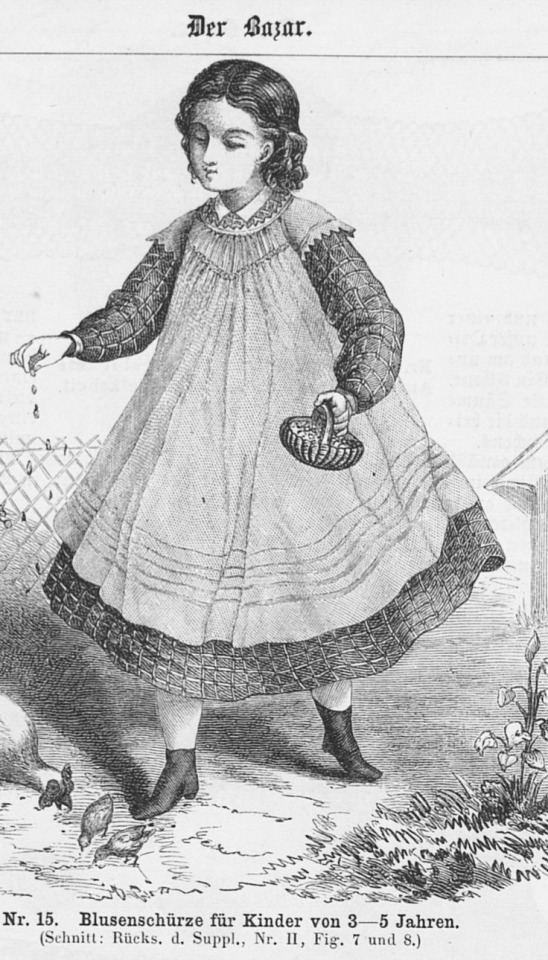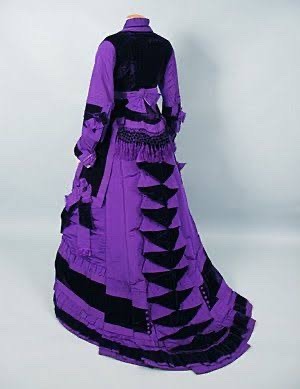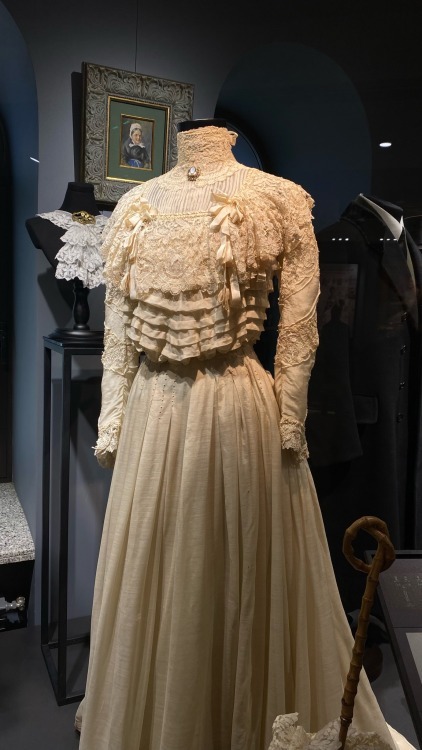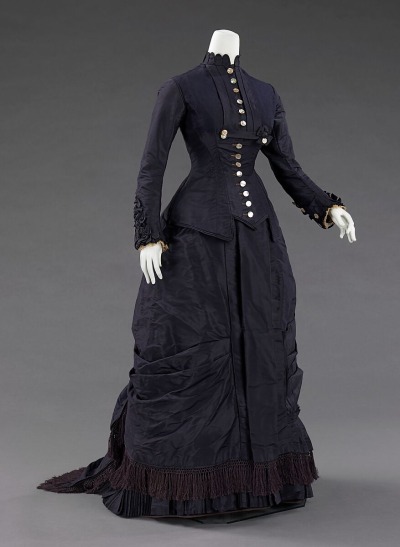Victorian Fashion - Tumblr Posts
i LOVE IT 😍😍
Mystery Inc. but it’s the 1890s




Who had late Victorian Scooby Doo on their 2024 bingo card? Hmm?
The idea came to me when I was thinking about Sherlock Holmes and then remembered the iconic mystery solving gang hehe
Why does Alice wear an apron?

During the 19th and early 20th centuries (Alice in wonderland taking place in 1865) it was common for young children to wear a pinafore or apron on top of their clothing to keep it clean. Because naturally children are messy and clothes are expensive and in a world before fast fashion you didn’t have a lot of clothes so you have to keep yours nice. So Alice being around seven at the time of the first book it is (in a historical context) unsurprising that Alice wears an apron/pinafore as most children her a age and younger would have. That is why Alice is always portrayed with her apron but of course as the decades went by this historical context has been lost to most people.




This is also why in the Alice in wonderland 2010 movie 19-year old Alice doesn’t have her now iconic apron. By that point in her life Alice should be wearing adult clothing. And although the movie doesn’t have the best historically accurate costuming I do appreciate the small historical detail none the less.


I did my own designs for Mina and Lucy too. Spoiler version under the cut


Oops new period interest. (Click for better picture resolution.)
The jacket is 1950s. The shirt is 1930s with a probably Edwardian collar, and the vest I made.
I suppose I’ll add some info on the vest here since I keep forgetting to make more posts (sorry). Some might know, but for those who don’t the print is Strawberry Thief by William Morris, which he successfully made in 1883. He came up with the idea when he saw thrushes eating his strawberries from his kitchen window.



This is an 1890s bodice made of green wool with a linen and/or cotton lining. The front and cuffs are silk. It has steel boning and decorative glass beading. There is a small section of velvet on the inner front. There’s also a small pocket on the left side (from the wearer’s perspective). Not only is this garment gorgeous and unique for the vibrant colors, but also because the beading seems to have been added by the original owner. Hence why it’s laid overtop of striped silk on the collar. It overall has a very handmade and loved feel, it has lots of piecing, the boning was patched after busting out within its life. It seems likely it was dyed with arsenic, but I don’t have materials to test.
More detailed pictures below











I've been meaning to post a picture of this shirt for a while, I made it almost a year ago. I just finished making the trousers as well. The shirt was copied from an original arrow shirt and collar I own. The trousers were drafted from an original 1890s manual online, and the construction methods were based on a pair of 1930s trousers I have to fill in the blanks. I replaced the hat band on my boater as well.
I got the fabric for both the shirt and trousers at Fabricmart. My buttons, cufflinks, other accessories/notions were gotten second hand or I already had them.
pov: your having sex with a victorian
*takes off cloak*
*undoes button*
*undoes button*
*undoes button*
*undoes button*
*undoes button*
*undoes button*
*undoes button*
*undoes button*
*undoes button*
*undoes button*
*undoes button*
*undoes button*
*undoes button*
*undoes button*
*undoes button*
*undoes button*
*undoes button*
*undoes button*
*undoes button*
*undoes button*
*undoes button*
*undoes button*

“Victorian Gothic’‘, repost
An Introductory Timeline of Western Women's Fashion
I think a good place to start to get into dress history is general overview of the whole timeline. Understanding especially how the silhouettes change is really important ground knowledge to build the rest of the information on.
I'll start the timeline from Middle Ages and go till the first world war. I'll focus on upper class England/French sector, so keep in mind that before 17th century there were huge regional differences in fashion inside Europe and class differences too. There is a lot variance, changes and nuance inside any century and decade I'm about to discuss, but I'll try to keep this short and introductory and very simplified. I used a very scientific method of basically what makes most sense to me to divide the periods. I've made sketches what I would consider to be the basic silhouette of the period stripped mostly out of the detail and then I give couple of primary source examples.
12th century (Middle Ages)

Dress was simple one or more tunics over a chemise. They were overly long for upper classes, made out of straight lines. There were loose tunics often worn over another tunic, and tunics with laced bodice called biaut. In France bliaut sleeves often widened from the elbow, in England they often widened in frists.
13th century (Middle Ages)

Clothing was mostly very similar as in the previous century, though bliaut was mostly gone and new popular style was a loose sleeves surcoat.
14th century (Middle Ages)

Tailoring basically revolutionized clothing production, since clothes weren't made out of rectangles anymore and could be better made to fit form. Also functional buttons and lacing was popularized resulting in very fitted styles. The underlayer tunic, kirtle, became a fitted supporting layer.
15th century (Middle Ages)

Improvements in weaving technology and trade and growing prosperity in Europe showed in clothing as excess of fabric and variety of trends. Houppelande, a loose A-lined overdress lined with fur and fastened with a wide belt under breasts, became a very popular clothing item, and in later decades developed into the iconic Burgundian dress (the red dress). Fitted overdress continued to be popular alongside the warmer houppelandes.
1500s-1550s (Tudor period)

In the renaissance era clothing became increasingly structured and elaborate. The bodice was heavily boned and the skirt was also structured.
1560s-1610s (Elizabethan Era)

Both structuring and elaborate decoration reach it's peak during Queen Elizabeth's reign. She became the defining fashion icon of the late renaissance.
1620s-1670s (Baroque)

In baroque era the bodice was still heavily structured, but more curved than the conical Elizabethan bodice. Otherwise though structuring was replaces with dramatic excess of fabric.
1680s-1710s (Baroque)

In the late 17th century there was a huge shift in the clothing industry as mantua, a loose open robe inspired by Japanese kimono, came to dominate fashion. Rigid bodice was replaces by structured under layer, stays. Stays brought back the conical silhouette of Elizabethan era.
1720s-1780s (Rococo)

Mantua developed into the iconic Rococo dress in France, robe à la francaise (first example picture), and in England robe à la anglaise with closed bodice. Rococo fashion was characterized by the wide silhouette of the skirt.

Since Tumblr won't accept more than 10 pictures per a post I'll have to continue in a reblog. So to be continued!
This is not an update on my AWAE dress, but don’t worry, I’m working on it! I started university again this week so that’s why I took a break for a few days but uni shouldn’t really impact how often I post, it’s not like I was posting constantly anyways. I might just throw in some fashion history anecdotes here and there if I can’t find the time to sew, but we’ll see how that works out.
Anyways, speaking of fashion history anecdotes, as I don’t have a sewing update just yet I’ll get into some history info on Regency Fashion for now.
Regency fashion is so pretty. It has such an elegance to it, yet it is so drastically different from its predecessor, Georgian Fashion. And I’m gonna tell you why.

(Warning: oversimplification of historic events happening)
It all started in the mid 1790s after the French Revolution, when the French had revolted against the aristocracy and gotten the King and Queen beheaded. The people hated the rich and didn’t want to be associated with them at all, so they reinvented fashion. The contrast was purposefully done to distance themselves from the aristocracy. And truly, these dresses couldn’t be more different from one another.

(1790 Robe à l’Anglaise vs 1795 Regency gown)
I like to think of it as a second renaissance - the reinvention of the fashion ideal in such a drastic manner within a very short period of time is one of a kind, and I don’t know of any other time/period when something even remotely similar happened. People went from the excessive luxuries and incredibly intricately decorated gowns to very simple dresses that almost resemble the togas of Ancient Greece - which, by the way, was a major inspiration for the Regency era.
We also see this inspiration come out in Classicism paintings that almost look too antique to have been made in the 19th century.

Simplicity was everything, at least up to the 1820s, when people grew tired of the rather plain dresses and started decorating them more and more until the 1830s happened, and we know what... just see for yourself.

But let’s stay in the Regency era. The dresses started off very simple and flowy in 1795, the hair was still very Georgian but the waist rose up right beneath the chest to create that typical Regency silhouette. The skirts were still a little wider but they decreased in width as time passed. Contrary to popular belief women did NOT stop wearing stays! But the stays were now often just corded and not boned, so they were softer and they also changed in shape and became a lot shorter.


Let’s move on to the 1800s. Little puff sleeves were fashionable and it is important to note that the dresses, while being rather plain compared to the Georgian style, weren’t always white. Sure, it was a popular color but having a colorful dress wasn’t any less common. We see in this fashion plate how the hair is now decorated less and in an updo similar to what we associate with Ancient Greek or Roman styles. Also, trains. At least sometimes.

No more trains in the 1810s, but we’re getting a little bit more decoration now. And women loved their short jackets that were inspired by male fashion! I especially love the sleeves. This is a picture I took at a fashion museum last year of a gown that I think should be from the second half of the decade:

But anyways, the waist dropped lower again in the second half of the decade and started moving lower from there.
Now, the 1820s were once again a transitional period between that typical simple regency fashion and the crazy 1830s. People were tired of their simple garments and wanted to get crazy and creative with it, so they just started decorating their dresses more, and the results are honestly stunning. The sleeves grew bigger as did the skirts. After 1825, the sleeve started moving lower on the shoulder to create that round shoulder shape we know from the 1830s. The waistline was much lower now, but not quite at the natural waist yet.


There’s a lot more to say but I don’t think I could think of it all right now. Anyways, I particularly love this era not because I find the fashion to be particularly beautiful, don’t get me wrong, the Regency gowns are gorgeous, but you know I love the Edwardian aesthetic so I’m partial. But I love Regency because it fascinates me how fashion and art can change so much in such a short amount of time.


Crimson Peak studies


Forest Beauty
Photographer: Beata Banach Model: Mamiko
Mystery Inc. but it’s the 1890s




Who had late Victorian Scooby Doo on their 2024 bingo card? Hmm?
The idea came to me when I was thinking about Sherlock Holmes and then remembered the iconic mystery solving gang hehe
obsessed with the era of historical fashion between the 1860s and 1870s where aniline dyes kept being invented. you can find some absolute fucking eyesores of dresses that were only made that way because “acid magenta” was invented last month and it was trendy.
like this iconic gown:

or this one from the 1870s in aniline purple and aniline black:

or a trendy yellow and black gown from c. 1865, perhaps?

feel free to reblog with additional eyesores (affectionate) that i might have missed
Mystery Inc. but it’s the 1890s




Who had late Victorian Scooby Doo on their 2024 bingo card? Hmm?
The idea came to me when I was thinking about Sherlock Holmes and then remembered the iconic mystery solving gang hehe
I love this song so mf much
Can I ask, where did you get these pictures from, there's an art project I'd like to do that would involve dresses like these?





I started drawing the Ever After High girls in random historical fashion eras… why? I have no idea

Raven Queen in 1890s, Apple White in Italian Renaissance.

Briar Beauty in 1920s, Madeline Hatter in 1880s
No particularly reason for the eras, just the vibe I get from the characters and their designs!

